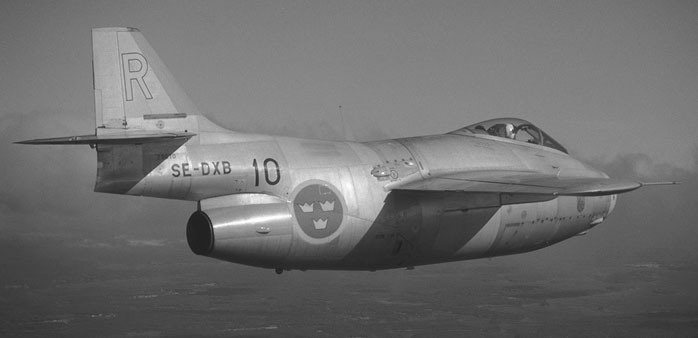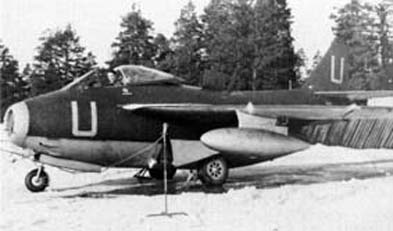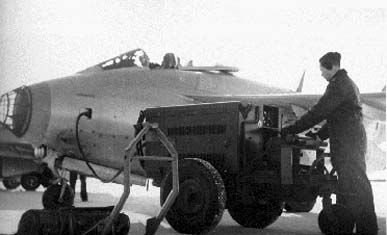

History:
|
By 1945 Svenske Aeroplan AB (SAAB) after gaining experience of jet powered aircraft in the conversion of the J-21 to the J-21R, were working on a design for an advanced indigenous jet powered fighter. With the agrement to import a large number of the British de Havilland DH 100 Mk I "Vampire"(J-28) and the licensed production of the "Goblin" centrifugal engine in 1945 (as well as the proposed production of the new 5,000 lb "Ghost" engine) the Swedes had been given up to date Allied jet technology on a plate!, this with the acquisition in November 1945 of a large amount of German avionic research material on swept wings, area rule design and faster than sound flight, gave SAAB all they needed to "catch-up". The proposed aircraft (the R-1001) would go through a number of design changes until it would be the first European jet powered swep wing fighter to enter production. |

|

|
Designed around the dh Havilland "Ghost" engine, with a straight though air flow and exhaust, which exited under the short tail boom, the pilot sat above the intake in an ejection seat under a bubble canopy, the wings were set at a 25° sweep and were of a laminar-flow construction, the tricycle undercarriage retracted into the fuselage, copying German design practice, in fact the whole aircraft was remarkably similar in layout to the Messerschmitt P.1101 and Kurt Tank's Ta 183 "Huckebein" (and it development after the war the Pulqui- II) In the autumn of 1946 the Flyvapnet (Swedish Air Force) ordered three prototypes which was given the designation J-29, with the first aircraft taking to the air on the 1/9/1948 with R Moore at the controls. The performance far exceeded expectations, being very agile as well as stable in flight. The first production aircraft entered service in January 1952 and by then had gained it's nickname "Flygande Tunnan"(Flying Barral). In all 661 aircraft were made, all apart from 30 which were sold to Austria were used by Sweden. The J-29 would remain in service in one form or another with the Flyvapnat until the early 70's, one aircraft still remains airworthy as befits such an excellent design. |